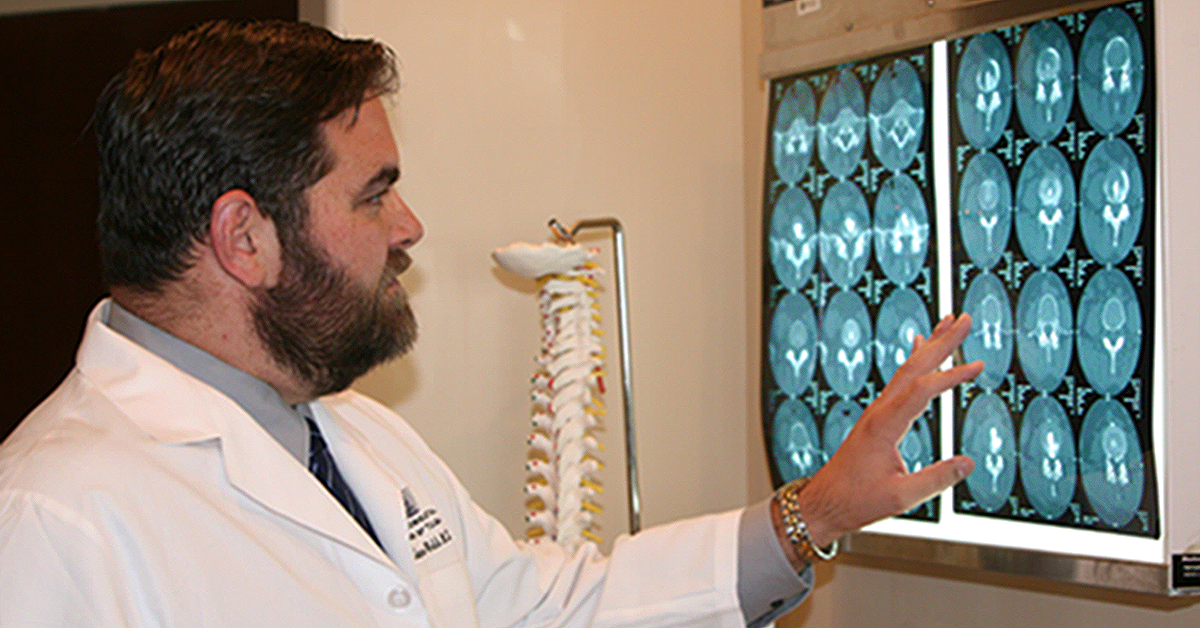





- Chronic Back Pain
- Low Back Pain
- Mid, Upper Back Pain
- Broken Back
- Bulging Disc
- Pinched Nerve
- Leg/Hip Pain
- Herniated Disc
- Sciatica
- Spinal Tumor
- Spinal Fractures
- Dowager’s Hump
- Hump Back
- Curved Spine
- Lumbago
- Spurs
- Kyphosis
- Vertebral fracture
- Vertebral compression fracture
- Osteoporosis
- Osteopenia
- Osteogenesis imperfecta
- Fragile bone
- Pseudoarthrosis
- SI joint
- Sacroiliac pain
- Pinched nerves
- Told you “Need back surgery”
- Told that “nothing can be done”
- Told “we don’t know what’s causing it”

Kyphoplasty is a minimally invasive medical procedure that can repair spinal fractures and restore structural integrity to spinal vertebrae. Kyphoplasty is an outpatient procedure.
The goal of kyphoplasty treatment is to eliminate the severe pain associated with a spinal fracture by stabilizing the broken bone with bone cement.
Many of our patients experience pain relief immediately after kyphoplasty. Kyphoplasty success rates for pain relief are about 94% according to the medical literature.
Radiofrequency ablation is a minimally invasive procedure through which a heat lesion is created on a nerve to interrupt pain signals sent to the brain.
Radiofrequency ablation helps by disrupting the nerve’s pain path to the brain.
Most patients will experience significant pain relief for about a year. For around 90% of patients, that pain relief lasts between 9 months and 2 years. If relief lasts 6 months or less, there is usually an underlying treatable cause such as fracture or burning pain.
An epidural steroid injection may be used to reduce inflammation around spinal nerves, thereby reducing pain associated with pinched nerves and reducing pain commonly associated with conditions such as sciatica.
Epidural injections can help reduce the body’s inflammatory response (and associated pain) that comes with common back problems, including as herniated discs, degenerative disc disease, lumbar spinal stenosis.


Conventional back surgery takes months to recover from and leaves a huge scar and metal in your back. It also causes the adjacent disks to wear out, requiring you to have more surgeries down the road. While that’s a terrible problem, the number one complaint we get from back surgery patients is that it just didn’t help their lower back pain at all. And sadly, for many of them, that was the entire reason they sought help in the first place.
Tulsa has no shortage of spine surgeons–we consistently rank in the highest for lumbar fusion per capita. Yet most people don’t realize that lumbar surgery doesn’t usually help back pain. It works best when you have leg weakness, severe pain in the legs or other symptoms like loss of bowel or bladder control. While there are many patients like this who do benefit from surgical care, many patients with isolated severe lower back pain see zero benefit and seek care elsewhere.
For most patients, that means they are “sent to pain management” where a doctor typically does epidural injections and puts them on long-term dangerous and ineffective opioid medications. While opioids are wonderful for acute pain, these medications just do not work for chronic pain–they only mask it. Our approach has always been to find out the cause of the pain and treat it at the source–eliminating the need for narcotics that don’t work anyway.
We have years of experience helping patients who still had pain after back surgery and those who couldn’t have surgery because of age or other medical problems. We routinely treat patients that have mystified other doctors.
What we try to do is get to the root cause of your pain.
To fix a problem, you first have to understand what’s causing it. The key to an accurate diagnosis is to really listen to the patient to gain a solid understanding of the pain they are experiencing and then, we do a targeted but thorough examination. By doing so, we are often able to find the source of pain, even when others have not.
The Science of Accurate Diagnosis
Too often health care providers rely on imaging to diagnose the problem, which is a set up for failure. Imaging, especially MRI, is often mistakenly thought of as a perfect test with near 100% accuracy. As a board-certified radiologist and textbook author, I can tell you that nothing could be further from the truth.
The accuracy of MRI–like–any other test-–is limited. Just a couple of examples of where imaging gets it wrong:
-Almost all (85%) of vertebral compression fractures are completely missed in radiologist reports (Bartalena, 2009; Carberrry 2013).
-MRI has false positives in up to 73% of patients. That is MRI shows supposedly ‘significant’ findings in most patients who have no back pain at all. (Wood, 1995; Jenson 1994).
When providers rely on imaging as their test–rather than history and physical exam–they are choosing the least accurate test possible.
These two things–the history and the exam–are the key to how I’ve been able to help thousands of patients that have mystified other doctors. And the crazy thing is–it’s usually the same five conditions that we see keep getting missed over and over.
By analyzing all the available data from the history, the exam, and imaging studies and synthesizing it into a cohesive, logical explanation, we can start a process of elimination.
After that, we employ a systematic approach based on the scientific method, identifying and treating and individual components of your pain.
It’s not always easy, and we don’t always get rid of your pain on the first procedure, but by following this proven method, we are able to help almost all of our patients find freedom from pain without surgery or narcotics.
Claim Your Back Pain Consultation!
MC Jensen, et al (1994). “Magnetic Resonance Imaging of the Lumbar Spine in People without Back Pain.” N Engl J Med 1994; 331:69-73. DOI: 10.1056/NEJM19940714331020. Most asymptomatic people have significant abnormalities on lumbar MRI. 52% of asymptomatic patients had bulges on lumbar MRI, 28% had herniations.
KB Wood et al (1995). “Magnetic resonance imaging of the thoracic spine. Evaluation of asymptomatic individuals.” JBJS 77(11):p 1631-1638, Nov 1995. 73% of asymptomatic patients have ‘significant’ anatomic findings on TMRI








